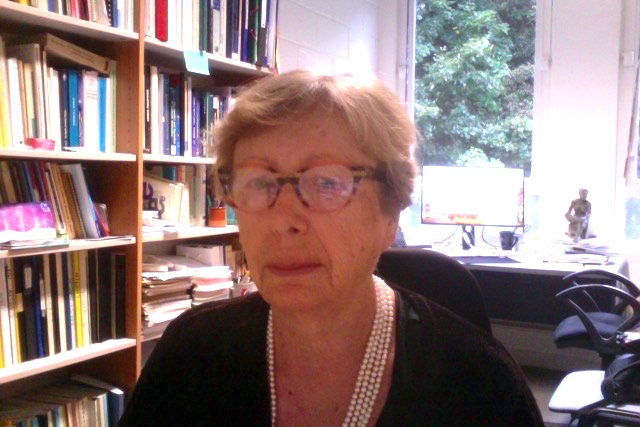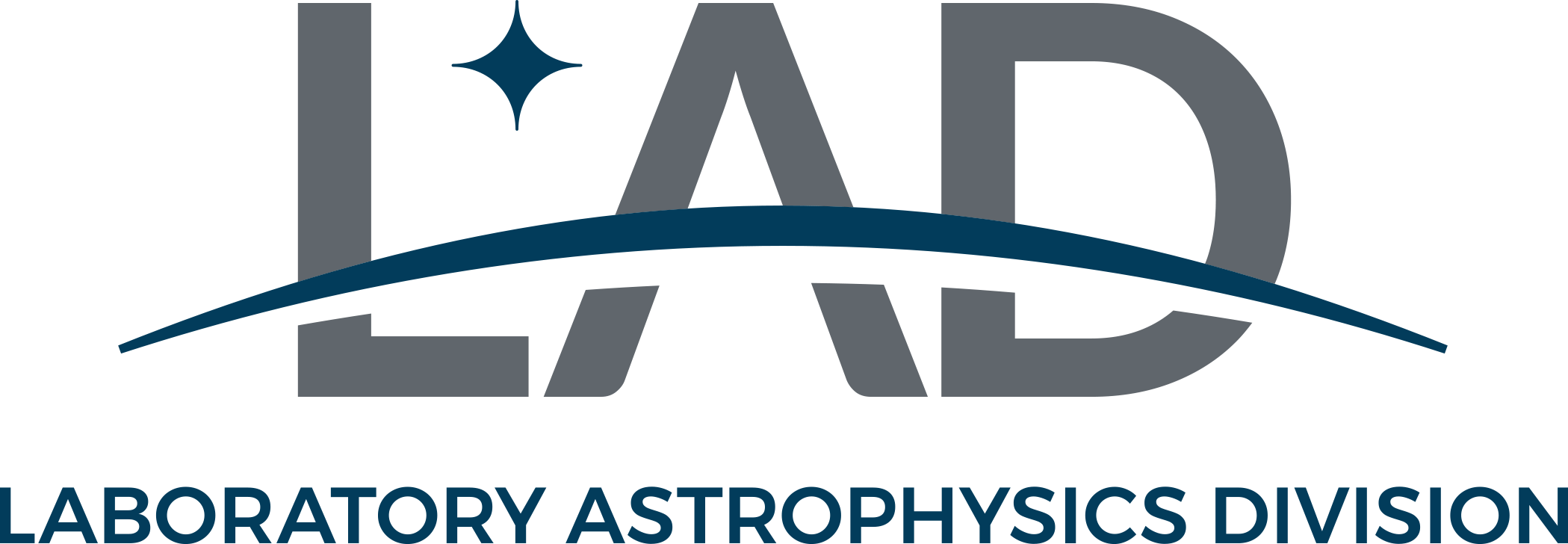You are here
2022 Laboratory Astrophysics Prize
2022 LAD Laboratory Astrophysics Prize Goes to Evelyne Roueff
 The Laboratory Astrophysics Division (LAD) of the American Astronomical Society (AAS) is awarding its 2022 Laboratory Astrophysics Prize to Dr. Evelyne Roueff of the Paris Observatory. This prize is given to Dr. Roueff in recognition of an outstanding career devoted to the theoretical investigation of the spectroscopic and collisional properties of molecules in astronomical environments.
The Laboratory Astrophysics Division (LAD) of the American Astronomical Society (AAS) is awarding its 2022 Laboratory Astrophysics Prize to Dr. Evelyne Roueff of the Paris Observatory. This prize is given to Dr. Roueff in recognition of an outstanding career devoted to the theoretical investigation of the spectroscopic and collisional properties of molecules in astronomical environments.
The Laboratory Astrophysics Prize, LAD’s highest honor, is given to an individual who has made significant contributions to laboratory astrophysics over an extended period of time. For the past five decades, Dr. Roueff has been a leading figure in theoretical laboratory astrophysics and computational molecular astrophysics. She has worked to interpret the spectra of molecules that are of relevance to astrophysics and has actively collaborated with experimentalists and observers to ensure the quality and relevance of her studies. Dr. Roueff has also been directly involved in the development of astrophysical and astrochemical models for which her theoretical laboratory astrophysics studies provide the foundation.
Dr. Roueff’s work on molecular hydrogen, the most abundant molecule in the universe, provides a beautiful example of these multidisciplinary interactions. She was involved in the interpretation of its vacuum ultraviolet (VUV) emission spectrum — emission at very short UV wavelengths — obtained at the 10m VUV spectrograph of Meudon observatory in the 1990s, and in computing the collisional excitation mechanisms by which this light is emitted. The detailed calculations of the VUV spectrum were impressively compared to the available experiments and introduced in the Meudon team’s chemical models. This work has many important astrophysical applications, including the interpretation of the absorption spectra of exotic astrophysical objects like quasars and white dwarfs, as well as providing constraints on the fundamental proton-electron mass ratio.
More recently, Dr. Roueff’s research has focused on understanding observations of the interstellar medium with the Herschel Space Observatory, the IRAM 30-meter radio telescope, and the Atacama Large Millimeter/submillimeter Array, studying the possible physical and chemical mechanisms driving the isotopic ratios in molecules that contain deuterium, carbon-13, and nitrogen-15. Of particular note are her efforts in growing laboratory astrophysics within France, throughout Europe, and in the global community. She was instrumental in coordinating the large-scale European networks “Astrochemistry” (1998–2002) and “The Molecular Universe” (2004–2008) and continues to be involved in other European efforts including the Virtual Atomic and Molecular Data Centre.
Dr. Roueff received her PhD from the University of Paris. She was an assistant professor at École Normale Supérieure de Jeunes Filles (1970–1980) before joining the Paris Observatory in 1980 as an astronomer. Since 2011, Dr. Roueff has held the title of Emeritus Astronomer. In 1999, she shared the Deslandres Prize from the French Academy of Sciences with Guillaume Pineau des Forêts.
The LAD Laboratory Astrophysics Prize includes a cash award, a framed certificate, and an invited lecture at a meeting of the Laboratory Astrophysics Division.
Contacts:
Phillip C. Stancil
LAD Past Chair
Department of Physics and Astronomy
University of Georgia
+1 (706) 542-2485
Rachel L. Smith
LAD Secretary
North Carolina Museum of Natural Sciences /
Department of Physics and Astronomy
Appalachian State University
+1 (919) 707-8239
Evelyne Roueff
LERMA, Observatoire de Paris
5, Place J. Janssen, 92190 Meudon, France
The AAS Laboratory Astrophysics Division (LAD) advances our understanding of the universe through the promotion of fundamental theoretical and experimental research into the underlying processes that drive the cosmos.
The American Astronomical Society (AAS), established in 1899, is a major international organization of professional astronomers, astronomy educators, and amateur astronomers. The mission of the AAS is to enhance and share humanity’s scientific understanding of the universe as a diverse and inclusive astronomical community, which it achieves through publishing, meetings, science advocacy, education and outreach, and training and professional development.
